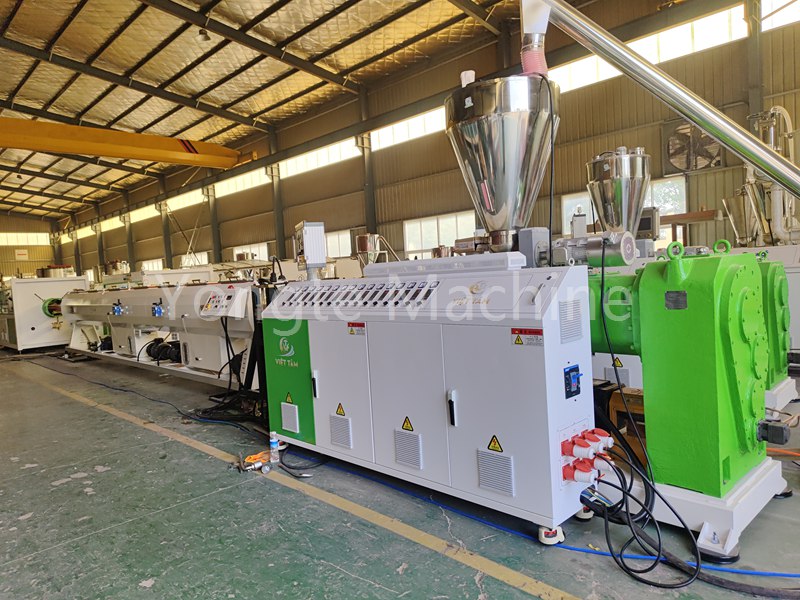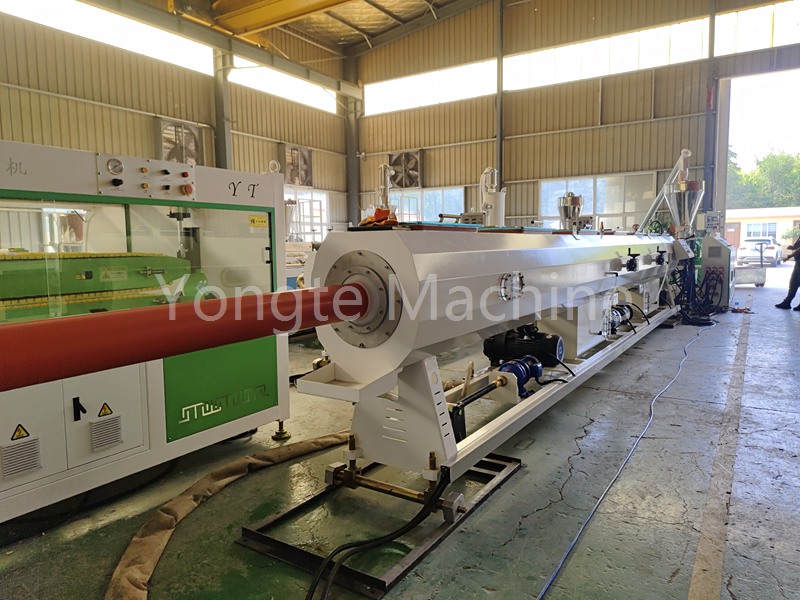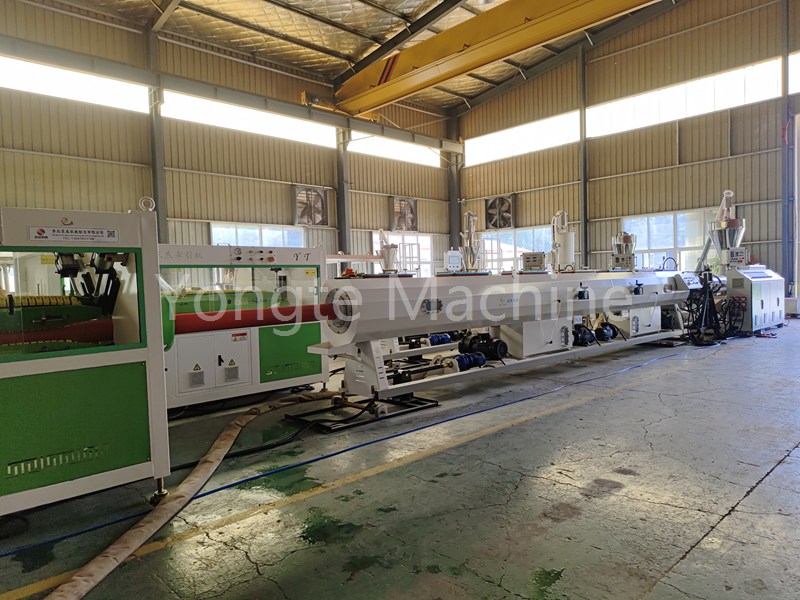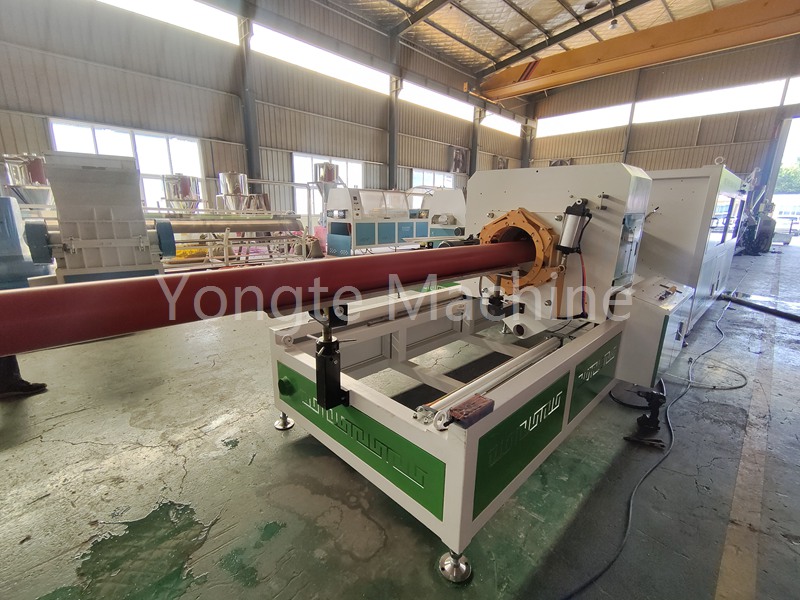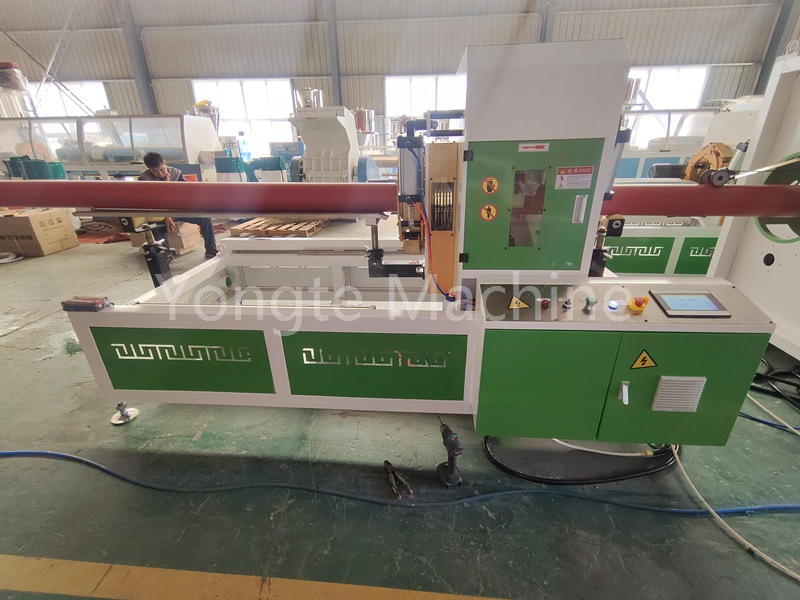Yongte is professional manufacturer for PVC insulation pipe making machine with high quality and great service
PVC insulation pipe is a pipe with insulation function. The following is a detailed introduction for you:
Structural composition
- Inner pipe: Usually a PVC water pipe is used as the inner pipe, which is responsible for conveying the medium.
- Insulation layer: Mostly polyurethane foam material, with low thermal conductivity, can effectively reduce heat transfer, such as the insulation layer of the inner PPR and outer PVC integrated composite insulation pipe uses polyurethane, and the thermal conductivity is between 0.018-0.022W/M·K.
- Outer pipe: It is a PVC pipe, which plays a role in protecting the insulation layer and enhancing the overall strength and durability of the pipeline.
Performance characteristics
- Excellent insulation performance: The polyurethane insulation layer greatly reduces heat loss. For example, the heat loss of prefabricated direct buried insulation pipe is only 25% of that of traditional pipes, which can effectively save energy.
- Good waterproof performance: The polyurethane rigid foam has a low water absorption rate, and the outer protective PVC pipe also has a certain degree of waterproofness. It can be used in humid environments or buried underground, such as the inner PPR and outer PVC integrated composite insulation pipe, the polyurethane rigid foam has a water absorption rate as low as 0.03.
- High compressive strength: can withstand certain internal and external pressures, such as direct buried insulation pipes can withstand large internal and external pressure differences, suitable for various installation environments, and not easily damaged by external force.
- Strong corrosion resistance: PVC material itself has good corrosion resistance, can resist erosion by acid, alkali and other chemical substances, extend the service life of the pipe, and is suitable for insulation and cold preservation projects in chemical and other industries.
- Convenient and quick installation: can be prefabricated and easy to install on site, reducing construction time and difficulty. For example, prefabricated direct buried insulation pipes can be directly buried underground or in water without the need for pipe trenches.
Application areas
- Building water supply and drainage: used to transport hot water, such as hot water supply systems in hotels, schools, dormitories and other places, can reduce heat loss and improve energy efficiency.
- Central heating and cooling: used as insulation pipes in urban central heating and central air conditioning systems to ensure efficient transmission of heat or cold energy and reduce energy consumption.
- Solar and air-energy hot water systems: can be used for hot water delivery pipes of solar water heaters and air-energy water heaters to maintain water temperature and improve system performance.
- Industrial field: In the chemical, petroleum, pharmaceutical and other industries, it is used to transport medium with temperature requirements, such as hot oil, hot steam, cryogenic liquid, etc. for heat preservation and cold preservation.
Product advantages
- High efficiency and energy saving: The insulation layer with low thermal conductivity reduces heat loss, and long-term operation can save a lot of energy costs.
- Safe and reliable: Good insulation performance can avoid scalding or frostbite, the pipeline connection is firm, the sealing performance is good, and it is not easy to leak.
- Durable: The PVC outer pipe is corrosion-resistant and aging-resistant, and the insulation material has a long service life, which reduces the number of repairs and replacements and reduces the cost of use.
- Beautiful and generous: The outer pipe has a smooth surface and uniform color, which can be coordinated with the building environment. The single pipe is long, with few joints and a neat appearance.
Installation method
- Preparation: Check the quality of the pipe and accessories to ensure that there is no damage or cracks; prepare installation tools, such as hot melt machines, cutting tools, screwdrivers, etc.; determine the direction and installation position of the pipe according to the construction drawings.
- Cutting and cleaning: Cut the PVC insulation pipe to the required length, and cut the outer pipe and insulation layer at the same time, paying attention to the smoothness of the cut; clean the surface of the inner pipe to remove impurities such as oil, dust, etc.
- Connect the inner pipe: Use hot melt connection, heat the inner pipe head and the inner pipe accessories with a hot melt machine and connect them. The heating time and temperature should be moderate, and cool for a certain period of time after connection.
- Install the outer connection piece: inject polyurethane foam filler into the gap between the insulation layer and the outer pipe to fill it fully; cover the other half of the PVC outer connection piece and fix it with screws.
- Special part treatment: Install the elbow at the bend, first weld the inner pipe elbow, and then connect the outer pipe elbow with the outer connection piece; use the buckle to fasten the outer shell accessories to ensure a firm connection.
Pictures of Yongte PVC insulation pipe making machine
